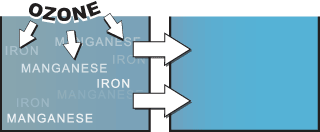Thursday, July 10, 2025, 2:25 AM
Site: Pa. DEP Operator eLearning Center
Course: Pa. DEP Operator eLearning Center (PADEP)
Glossary: Course Glossary
DRINKING WATER
NTNCWS - NTNCWS – Nontransient Noncommunity Water System
- (DBP01) DBP Rule – Overview (1282)
- (DBP02) DBP Rule Monitoring and Reporting – Job Aids (1283)
- (DBP10) DBP Rule Monitoring and Reporting for Chlorine⁄Chloramines (1284)
- (DBP13) DBP Rule Monitoring and Reporting for TTHM⁄HAA5 (1285)
- (DBP30) DBP Rule Monitoring and Reporting Requirements for PWSs Using Ozone (1279)
- (TCR02) Total Coliform Rule – Monitoring And Reporting Requirements (1425)
- (TCR03) Total Coliform Rule – Maintaining Compliance (1426)
- A noncommunity water system that regularly serves at least 25 of the same persons over 6 months per year.
- (LCR10) Lead and Copper Rule – Basics (1423)
- (LCR11) LCR – Initial Planning, Monitoring and Reporting (1488)
|
|
Nucleus A central mass about which other matter collects; a starting point for growth or development.
- (COA01) Coagulation – Part 1: The Chemistry of Coagulation (1248)
- (COA02) Coagulation – Part 2: Coagulation Chemicals (1249)
|
|
O&M O&M – Operation and Maintenance
- (PNR01) Public Notification – An Introduction for NCWSs (2332)
|
|
OCCT Optimal Corrosion Control Treatment - Corrosion control treatment that minimizes the lead and copper concentrations at users' taps while ensuring that the treatment does not cause the system to violate any primary maximum contaminant level.
- (LCR10) Lead and Copper Rule – Basics (1423)
- (LCR11) LCR – Initial Planning, Monitoring and Reporting (1488)
|
|
One full year any 12-consecutive month period of monitoring.
- (DBP30) DBP Rule – Monitoring and Reporting Requirements for PWSs Using Ozone (1279)
|
|
Optimal Corrosion Control Treatment Optimal Corrosion Control Treatment (OCCT)
Corrosion control treatment that minimizes the lead and copper concentrations at users' taps while ensuring that the treatment does not cause the system to violate any primary maximum contaminant level.
- (LCR10) Lead and Copper Rule – Basics (1423)
- (LCR11) LCR – Initial Planning, Monitoring and Reporting (1488)
|
|
Organic Substances Substances that come from animal or plant sources and contain carbon. Examples include wood, sugars, proteins, plastics, petroleum-based compounds, solvents and pesticides.
- (DBP02) DBP Rule Monitoring and Reporting – Job Aids (1283)
- (DBP10) DBP Rule Monitoring and Reporting for Chlorine⁄Chloramines (1284)
- (DBP13) DBP Rule Monitoring and Reporting for TTHM⁄HAA5 (1285)
|
|
Oxidant - A substance that readily adds (takes on) electrons.
- (DBP01) DBP Rule – Overview (1282)
- A substance that is used as an oxidizing agent, which causes a substance to lose electrons, changing its chemical nature.
|
|
Ozonation The application of ozone to water for disinfection or for taste and odor control.

|
|
WASTEWATER
Activated Silica A coagulant aid that is created on-site by neutralizing sodium silicate.
-
(COA02) Coagulation — Part 2: Coagulation Chemicals (1249)
<\ul><\li>
|
|
